
Jag har alltid tyckt om och tyckt att EB110 är och var en underskattad superbil.
Det största problemet var väl egentligen att Bugatti på den tiden kanske hade sin sämsta tid sett rent ekonomiskt när det ändå var ett aktivt företag. (Bugatti har stått helt stilla och bankrutt flera omgångar)
Folk vågade inte köpa bilen helt enkelt av den anledningen..
De flesta Italienare gick knakigt på den tiden.. Bytte ägare till höger och vänster.
Men det såldes ju bilar ändå..
Till en dag då allt bara stod stilla igen..
För bilen.. Ja vad finns det att inte älska..

Raka linjer, såna former och linjer jag älskar.. Saxdörrar på det..

V12a på bara 3.5 liter.. 5 ventiler per cylinder och FYRA Turbos!
6 växlad (de flesta andra var 5 växlade på den tiden) kolfiberchassi (världens första), fyrhjulsdrift (även om jag föredrar SS med bakhjulsdrift),
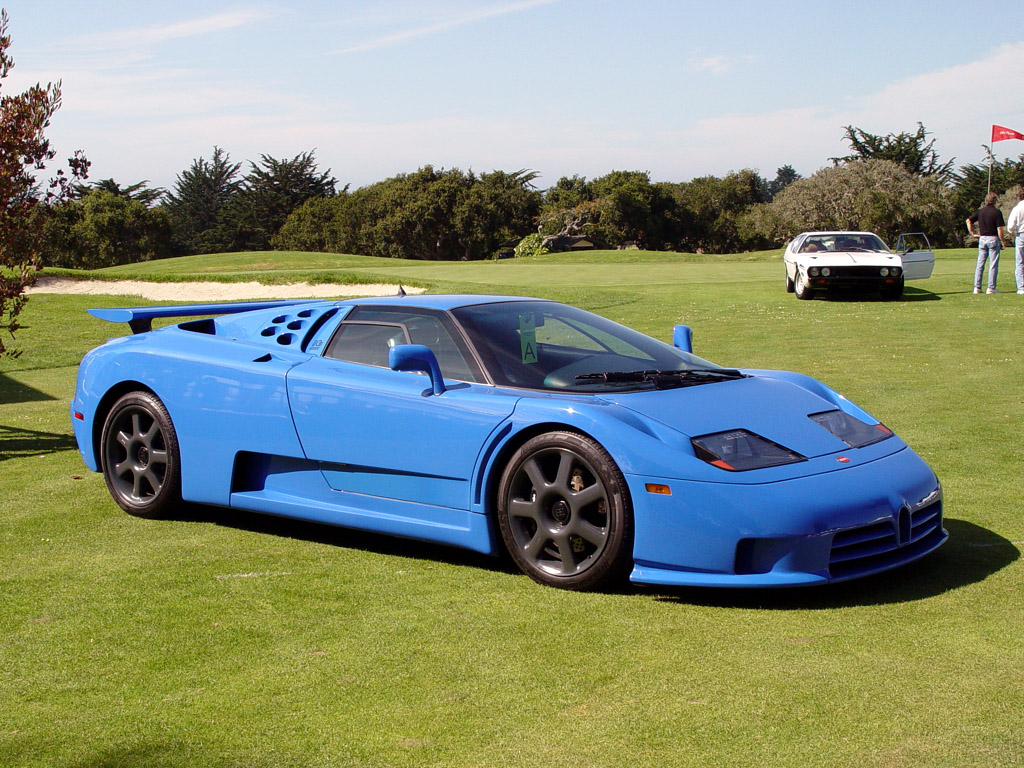
0-100 på 3.4 sekunder och en toppfart på 343km/h! Och detta med ”bara” 560hk
SS som kom senare med bakhjulsdrift och 200kg lättare hade 620hk… Den gjorde 0-100 på 3.2 sekunder.
Det är MYCKET extremt än idag!
För mig så bara blinkar detta klippet, det kanske funkar bättre för er.
- Oj vilket deprimerande jobb..
- Tänk så mycket detta företag / Namn har gått igenom.. Extrema ups and downs
- Det finns en (minst en vad jag vet) EB110 ägare som har monterat en Veyron motor i sin bil.
Om han behöll fyrhjulsdriften eller inte det vet jag inte. - Känslofylld video..
Detta är en av anledningarna till att vi älskar italienska bilar.. Vi har alltid trott att de alla byggs med denna passion.. - Synd att byggnaden bara står tom..
- Ni vill jag ju ha en EB110 mer än någonsin!
- Jag minns fortfarande första gången jag såg den live..
En och samma ägare som ställde ut en blå EB110, Porsche GT1, CLK-GTR och en McLaren F1 (Kanske nån mer, Jaguar XJ220?)
Han hade alla drömsuperbilarna på den tiden. - Bra video men de berättade ju inte så mycket OM bilen..
Vilket jag visserligen täckte överst i inlägget. - Jag tror väldigt bestämt att det var VW som låg bakom sabotaget.
- Modellen heter EB110 och den presenterades den 5 September 1991 för att fira Ettore Bugatti’s 110e födelsedag.

Så.. Där är så mycket mer jag vill berätta.. Men jag vet inte hur jag ska börja.

Bilen var verkligen Veyron för sin tid..
Bara det faktum att Michael Schumacher ägde en EB110 sa en hel del.

Han köpte en SS 1994, samma år som han vann sitt första världsmästerskap.


Han krockade den bilen senare och efter det så körde han bara Ferraris.

Bilen fixades innan den såldes 2003, för $745,000.


Så han hade den i många år ändå.

Det blev bara 95st EB110 GT och 31st SuperSport (SS)

Ifrån Bugatti… Sen om siffrorna stämmer så finns det 139st EB110 totalt..
Ingen vet säkert.
Mer om det senare.
Den Schumi ägde var en SS men med GT läderinredning.


Ja företaget lades ner..
Men innan dess så gick det ju faktiskt bra..
Så som ni såg i klippet.. det låg en hel del skumheter bakom den konkursen
Det är faktiskt som så att Bugatti köpte loss Lotus Cars ifrån GM 1993.
- Prinsen av Brunai äger 4st EB110, Han var mycket noga med att han skulle ha de allra första 3 SuperSport
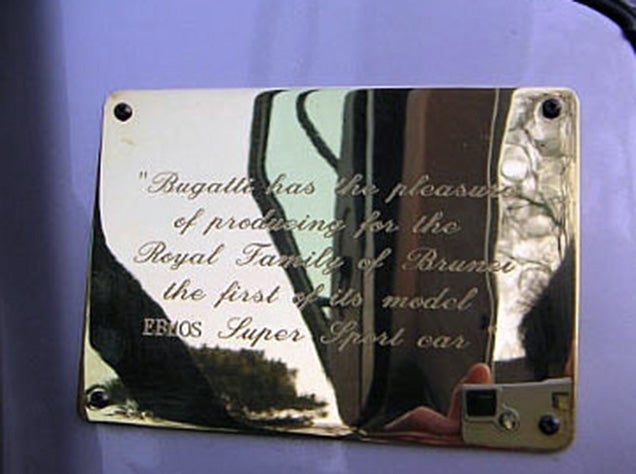
Men.. det fanns mer eller mindre färdiga bilar kvar i hallen så som jag förstår det.
Så det som hände med dem var att andra företag tog över och byggde färdigt bilarna.
2st av de 31 SS modellerna är faktiskt riktiga Brabus bilar.

Detta är den ena utav det paret.
(De flesta säger att det bara finns en enda Brabus EB110.. Men vissa säger att det finns två…. Så.. )

En äkta Brabus.. helt och hållet..




Den är förfinad och förbättrad givetvis.
Jochen Dauer köpte upp det mesta utav företaget, Så under 2001 och 2002 så byggdes det faktiskt helt nya EB110.

Dessa är absolut mina favoriter.
Dessa 5st Dauer EB110 är baserade på den lättade SS versionen, men har fyrhjulsdrift ifrån GT-versionen.. Men har karosser i kolfiber istället för alu,
och motorerna har 705hk!
Så dessa 5 (?) bilar är SNABBA!!!
De piskar Veyrons utan problem sägs det.

I vissa segment..
Dessa gör 0-100 på 3.3 sekunder och har en toppfart på 370km/h
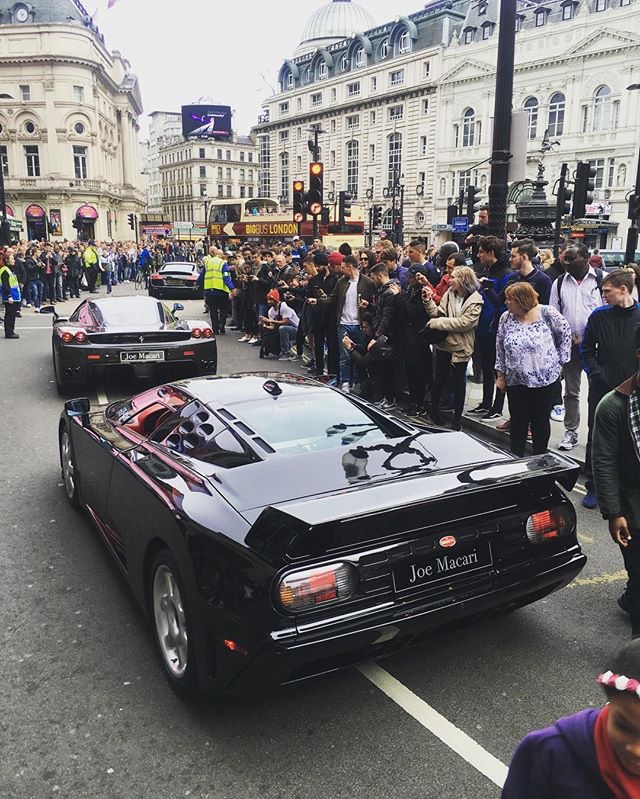 Detta gör att dessa Dauer EB100 ser mycket vackrare ut än de andra, äldre ifrån Bugatti.
Detta gör att dessa Dauer EB100 ser mycket vackrare ut än de andra, äldre ifrån Bugatti.
Detta är alltså verkligen ett perfekt exempel på ”gör om, gör rätt”..

Eller att modernisera.. förfina.. kalla det vad ni vill.. Dessa bilar är perfekta.
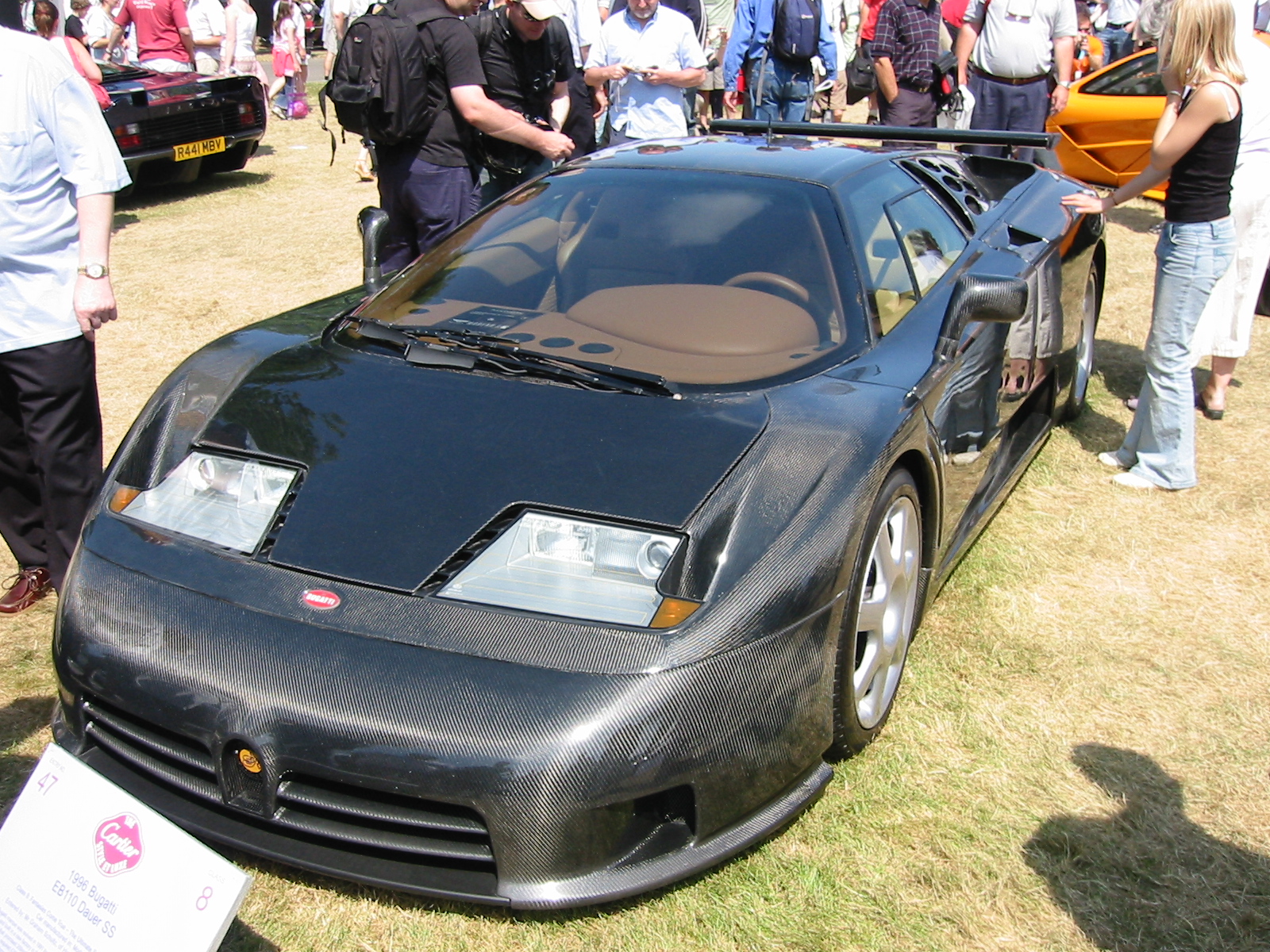
Men nu kommer vi till de där osäkra siffrorna igen..
Det sägs att det byggdes 5st Dauer EB110..
Så är det inte riktigt..
1999 så färdigställde Dauer 4st EB110.
3 blåa och 1 gul.
En av de blåa hamnade i Sverige.
Dessa 4 har Bugatti loggor och emblem, Det står Dauer lite här och där också givetvis.
Dessa bilar började sitt liv som Bugatti´s och färdigställdes av Dauer som sagt, men räknas helt som Dauer bilar ändå.
Sen mellan 01 och 02 så byggdes det från grund 5st bilar.

Dessa är verkligen Dauer bilar helt och hållet.

Dauer EB110 S heter dessa.

De är det snabbaste och bästa EB110 som byggdes.
De är tack vare kolfiberkarosserna och en massa andra modifieringar YTTERLIGARE 200kg lättare än en Bugatti SS modell..
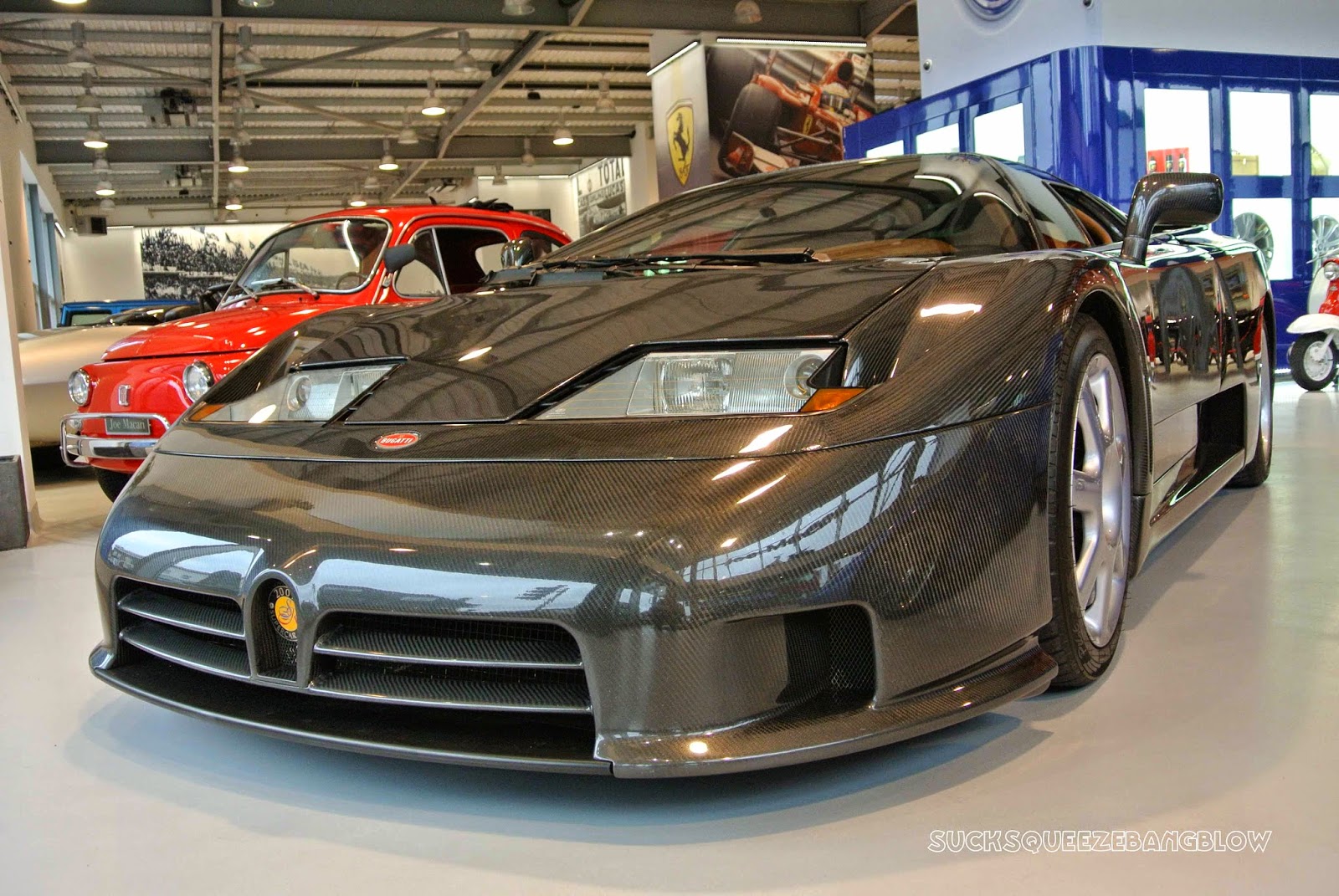
Sägs det..
Trots att dessa bilar är toppmoderna och lyxiga..

Men.. Dauer slutade officiellt med EB110 2007 som först.
Och det har synts till ytterligare två bilar.. Men som inte verkar ha något chassinummer..
En svart och en med en massa färger.

Den sista där var väldigt udda..

Bara bakhjulsdriven, inga elhissar som de andra Dauer EB110 S fick.

Och en minst sagt speciell lack.


Den bilen byggdes 2005.. Men kanske inte färdigställdes?

Detta är alltså en bantad version av en bantad version av en bantad version..

Den gjorde ett par inofficiella varv på Nurburgring under 7 minuter (!!!) och sen försvann den.
När Dauer köpte Bugatti så fick han med 15st färdiga motorer och 7 st chassin.
Men när Dauer gick o konkurs så lämnade han 21st chassin kvar..
Och där kommer vi till det sista steget för EB110
Den sista Dauer bilen som var väldigt lätt och väldigt snabb..
Som kanske är försvunnen.. Har troligtvis använts som en ”mula” för Edonis.

Ja vad är då Edonis..
När Dauer gick i konkurs så hamnade det resterande tillbaka till Bugatti…
Typ..
En handfull fd Bugatti anställda startade ett företag som heter B Engineering.
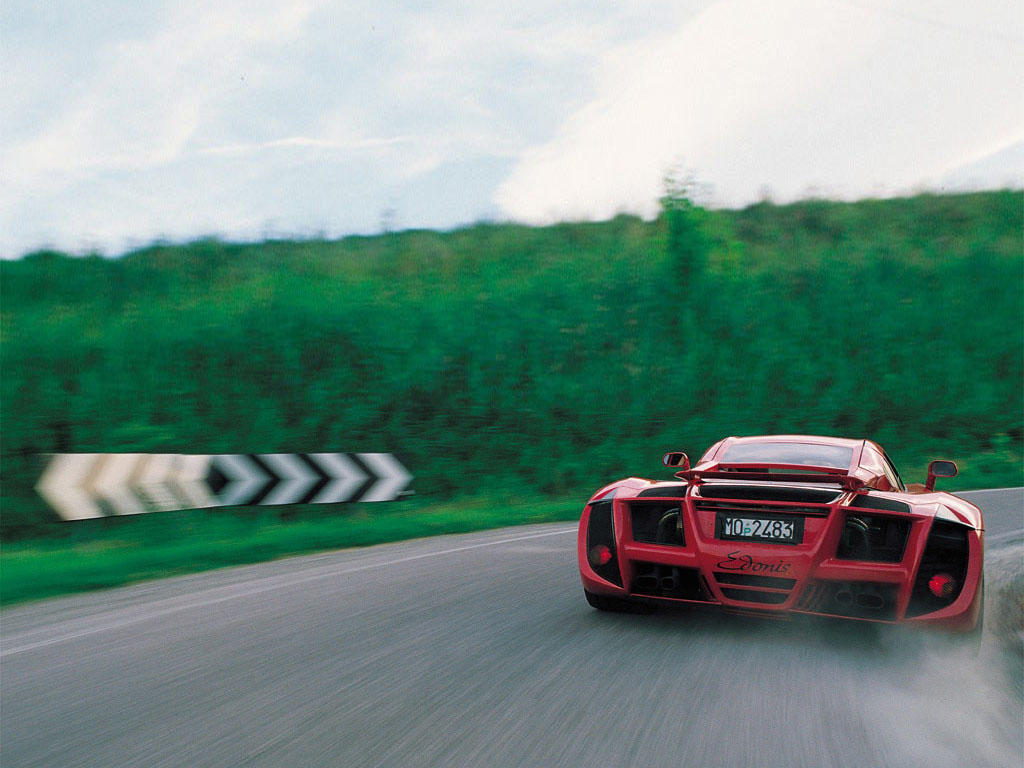
(Den bilden är en av mina favortibilder någonsin pga den extremt feta röven)
De ville bygga en kompromisslös EB110.
De tog över delarna efter Dauer, men de fortsatte inte där han slutade, utan de tänkte också ”gör om, gör rätt”
Edonis är en re-engineered EB110 Supersport.

Motorn gick från 3.5 liter och 4 mindre turbos till strax under 3.8 liter och två stora turbos.

Så från Bugattis 610-620 hk så lämnade den nya motorn 680hk (Varför fortsatte de inte med Dauers motor?)

Fyrhjulsdriften togs bort än en gång mot en mycket simplare och lättare bakhjulsdrift.

Vikten stannade på 1500kh.


Det är 480hk per ton och 181hk per liter.

Bilen gjorde 0-100 på 3.9 sekunder och hade en toppfart på 365km/h..
Vilket gjorde denna bilen till världens snabbaste bil under ett par dagar..


Så Edonis är absolut en grym bil..
Kanske inte så snygg ifrån alla vinklar..

Jag säger alltid att om en bil är snygg eller inte grundas på lamporna..
Och denna bilen ser ju verkligen deprimerad ut..
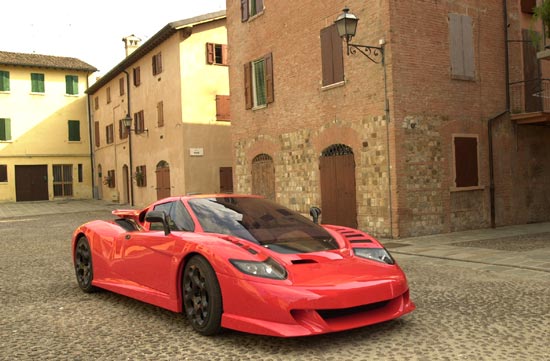

Men ändå tycker jag att den är snygg..
Kanske för att jag känner till allt bakom bilen..
Men… Varför fortsatte de inte med Dauer EB110 S som grund och sen trimmade den?

Det var väl den italienska hedern kan jag tänka mig.
Vilket som.. Bilen var fullt fungerande.. Hade preimär..
Var världens snabbaste bil..
Tills de blev omkörda..
Av Bugatti….
Samma år.. 2005.. så slog Bugatti Veyron ett världsrekord på 408.47 km/h..

Vi kanske inte kan skylla allt på detta..
Men på den tiden så brydde hela världen sig bara om att slå rekord i toppfart..
Och att från ena veckan vara världens snabbaste med 365km/h till att bli slagen av en Bugatti av alla.. Som gör över 400km/h..
Då var det verkligen bara att tacka för sig och säga hej då..
Och så blev det..
2st Edonis blev det..
De resterande delarna där såldes i sin tur till ett annat företag, Toscana-Motors GmbH.. Tyskar igen..
Deras planer känner jag inte till, men de gick iallafall ut med att de kunde serva och hade reservdelar till de 130isch EB110 som rullade där ute..
Det sas att de skulle bygga bilar på de resterande 19 chassina som blev kvar..
Men… bara två år senare så dog deras hemsida… och även om företaget sägs vara igång så är det väldigt tyst tifrån dem..
Jag tycker att denna bil har en mycket intressant historia..
Detta är verkligen en legend i dess rätta benämnelse..
Jag hoppas att ni tyckte om läsningen.

MYCKET tråkigt att BBC har dödat hans kanal!
The Story Of Bugatti EB110
https://youtu.be/9T8lcNU6PIE
The Forgotten Supercar – The secret story of Bugatti Automobili
Bugatti EB110 Super Sport by DKTV
Doug DeMuro : The Bugatti EB110 Is the Ultra-Rare, Ultra-Quirky 1990s Bugatti
World Speed Record Bugatti AND Ferrari!
ONE OF THE RAREST SUPERCARS EVER!
Bugatti Went BANKRUPT After Making This Car
Four Bugatti EB110’s – Featuring Last Ever EB110 Super Sport Ever Built!
Supercar Stories – Bugatti EB110
Bugatti EB110 Documentary
Schumacher ritira la EB110 a Campogalliano – Bugatti automobili
Bugatti EB110 SS | 90s Supercar Legends [Part 1]
Four Bugatti EB110’s – Featuring Last Ever EB110 Super Sport Ever Built!
La fabbrica blu / The blue factory – Teaser Film Documentario Bugatti Automobili
ACETO BLU: The Human History of Bugatti.
The Bugatti EB 110 Road & Track Test | Fifth Gear
The Bugatti EB110 Was A Quad-Turbo, V-12 Greek Tragedy — Revelations with Jason Cammisa
Nedan klistrar jag bara in text som jag själv inte orkar läsa.
Här kan ni läsa mer om Dauer bilarna
http://www.supercars.net/blog/dauer-eb-110-supersport/
1998→2007 Dauer EB 110 Supersport
The Bugatti EB110 was billed as the supercar to end all supercars when it debuted in the early `90s, but rushed development and the company´s shaky financial footing left it a flawed jewel. But now the folks at Dauer Sportwagen have delivered on the original promise.
The Bugatti EB110 was billed as the supercar to end all supercars when it debuted in the early `90s, but rushed development and the company´s shaky financial footing left it a flawed jewel. But now the folks at Dauer Sportwagen have delivered on the original promise.
Every time we see a Bugatti EB110, we wonder just how good this car could really have been. We visited the factory in Campogalliano twice in the early 1990s to meet the people and drive the cars. The buildings were wonderful, the atmosphere hummed with enthusiasm. The overriding impression was that too much was being attempted with too little, in too short time.
Fate certainly seemed to agree with that, and when the company went into liquidation in 1995, over 100 owners around the World were left with cars they were afraid to drive. If something broke, they would not be able to get spares.
Existing or would-be EB110 owners can rest easy now, because of every single last nut and bolt form the Bugatti factory is now in the hands of Dauer Sportwagen in Nuremberg, Germany. A complete spare parts catalogue, with exploded diagrams and part numbers to make ordering easy, is now available form Dauer Sportwagen. The company can also source a pre-owned car, which will be fully serviced and warrantied.
If the Dauer name sounds familiar, think back to Le Mans 1994. The Porsche 962LM that crossed the finishing line first was prepared and run by Jochen Dauer and his team, who subsequently build half a dozen road-legal 962 Le Mans cars for wealthy enthusiasts including the Brunei royal family.
Now, nearly four year after he brought all the EB110 parts up from Italy, Jochen Dauer has broken cover with the Dauer EB110, a limited-edition car built form the handful incomplete chassis left over at Campogalliano.
“I always believed the EB110 was basically a great car that just needed a bit more development work,” Jochen Dauer explained. “The idea of four small turbos to cut lag was a good one, but Bugatti needed more time to make it work properly.”
“The body construction was overly complex,” he said, showing us around a stripped-out original EB110 next to one of the five completed cars. “It was also heavy with ist aluminium skin. We use carbon fibre for the bodyshell now,” he said, easily lifting the whole one-piece roof/sill/front inner fender section with one hand.
“The original inner fenders were made up form several bits of aluminium sheet welded together. This made them labor intensive and expensive to produce. With our experience of designing and building Group C sports cars, we decided it would make sense to simplify things and produce sections like this from one piece of carbon fibre., which also cuts weight. Another over-complicated section was the area behind the rear panel. Again, the original is assembled from several metal components and many brackets, and we simplified and lightened it with just two carbon fibre mouldings.” The heavy roof structure of the original was also rationalized, with carbon fibre used for the skin instead of aluminium. An original complete door assembly weighed 110 pounds. Building it the Dauer way saves 33 pounds per side.
The final weight saving is spectacular, with the Dauer EB110 tipping the scales a significant 507 pounds less than the 4,233 pounds of the original US-spec Bugatti. The European version weighed 4,145 pounds, but the Dauer car weighs only 3,726, despite adopting the longer US-style bumpers, which protect the car better and, for once, actually improve the aesthetics. The crash beams behind the bumper skins are also made from carbon fibre.
The Bugatti engine is a 3.5-litres, quad-cam, five-valves-per-cylinder, 60-degree V12 with four IHI turbos. It originally came in two forms, with the “normal” EB110 GT showing 560bhp at 8,000rpms and the “Supersport” delivering 610bhp at 8,250rpms.
One of the big problems of the original EB110 was turbo lag. When we drove the first EB110 Supersport in 1992, we noticed that the car was very tractable around town, but when you put your foot down, the engine hesitated big time while the turbos spooled. Then it happened all in one go.
Dauer blueprints each motor to improve gas-flow within the turbo installation. But the 645 bhp that his company´s modifications produce is not the end of the story. An optional REMUS sports exhaust and modified ECU release an additional 60 bhp. But whether you are talking 645bhp or 705 bhp, this is Le Mans Group C level of power, albeit in a car that is much heavier than a pure race car.
With 4WD optimizing traction, the Dauer EB110 Supersport gigs in and launches itself to 60mph in just 3.3 seconds, blast past the standing kilometer in under 19 seconds and tops out an estimated 230mph, some 12kph faster than the original thanks to lower weight and greater power. Dauer says, he has seen 400kph (250mph) indicated on the autobahn, but we would need to time it at Nardo to verify that.
As we got into the Dauer car, memories from when we drove the first production EB110 Supersport, eight years before, came flooding back. Our impression then was a car with light, responsive controls, that was easy to drive around town compared to any contemporary mid-engined supercar.
The same applies to this evolutionary Dauer EB110 Supersport, except that it is immediately obvious how much better the car is finished and resolved in its details. The cabin of the original EB110s often varied form car to car and was too much like an upscale Lancia. The Dauer uses the finest German leather applied by Italian craftsmen, far surpassing the the original cars for quality. The Dauer EB110 Supersport caes with the latest Kenwood navigation system including a DVD player and TV tuner.
The original Bugatti had one major ergonomic failing. The narrow footwells squashed the pedals too closely together, and the pedals pads had square corners, which meant that even if you wore a modest size eight show, you could easily catch the brake and accelerator at the same time – not a good thing when the right pedal can unleash over 500 horsepower. Unfortunately, constraints of the original cockpit tun mean nothing has changed in this regard with the Dauer EB110 Supersport.
Apart from that, the car is easy to drive as ever. Throttle response is better than before, but tubro lag is still not completely banished. Low-speed tractability is excellent and the car takes little effort to drive in the urban grind. When you find a clear stretch of a road and push the throttle to the floor, it takes a second or two to build up a head of steam. Then all hell breaks loose, and as the 645 horses gather for their charge, you have a second or tow to be grateful that they reach the road via all the wheels.
The slight turbo lag is only really noticeable when you accelerate from low speeds. Once the motor is on the boil, throttle response is instantaneous and the 480lb/ft of torque peaking at 3,750rpmsdelivers an intoxicating kick in the back that you don´t forget in a hurry, no matter what road car you drive now. Taking the Dauer EB110 Supersport to its 8,000rpms redline through the gears is an amazing experience. It´s like being in a 3D arcade game with sound and motion set to maximum sensory stimulation.
The basic sound of the motor is more akin to a Lamborghini than a Ferrari. It´s a deep purposeful growl that rises with crankshaft rotation speed. Adding to the soundtrack are the turbos as they blow off excess boosts on upshifts. The scream of the cam drives and the howl of the exhaust is something to be experienced. It is by no means as loud or as raw as a Diablo, but it´s unique and priceless in ist own way.
Like almost all mid-engined supercars – even Lamborghini´s brand-new Murciélago – the Dauer EB110 Supersport suffers from restricted rearward visibility. However, in terms of the lightness of its controls, the EB110 was well ahead of its time. The weight of the controls – steering, clutch, throttle brakes and gearshift – is around the same as a BMW 3 series, which makes driving in modern-day traffic not too much of a bind. In this regard, the EB110 is the antithesis of earlier supercars such as the Countach.
When you get the chance to play on the open road, the combination of the EB110´s low, wide stance and 4WD makes it exceptionally stable in corners. In this regard, the Bugatti was also ahead of its times. The car takes high-speed lane changes in stride. All that traction gives you confidence to use the throttle like you never would in a RWD car with this much of power. The ability of the chassis to deliver on-rails cornering and blinding acceleration in the most unlikely places gives a feeling of virtual invincibility. You just need to remember that the laws of physics are immutable – the Dauer EB110 Supersport does have limits.
There was not much wrong with the original EB110 in the suspension department, but the level of grip in noticeable better in the Dauer car and tire noise has been reducec as well. “We have not altered the chassis appart from using slightly softer Eibach springs to offset the weight decrease,” Dauer eplained. “But the new Michelin Pilot tyres are a quantum leap over the original early ´90s Michelins, and make a big difference to handling and grip.” The tyres measure 245/40ZR18 in front and 325/30ZR18 in the rear.
The five cars that Dauer has built for sale are finished in Bugatti blue, black with clear lacquer, silver, dark silver and our test car in carbon fibre with clear lacquer. The asking price is about $400,000 more than the EB110 sold for in the day. Since there were only five exsisting chassis, Dauer cannot build anymore of these significantly improved EB110s.
Thanks to Dauer´s modifications, the EB110 has finally delivered on its original promise. In terms of performance and refinement, the Dauer EB110 Supersport can hold its own against today´s supercars.
Thanks to Dauer´s modifications, the EB110 has finally delivered on its original promise. In terms of performance and refinement, the Dauer EB110 Supersport can hold its own against today´s supercars.
Story by By Ian Kuah, Sports Car International magazine
In Detail
| production years | 1998 – 2007 |
| built at | Nuremberg |
| coachbuilder | Dauer |
| production | 8 |
| price $ | $ 450,000 EUR |
| predeccesor | 1992 Bugatti EB110 SS |
| engine | V12 |
| position | mid longitudinal |
| aspiration | 4 IHI Turbi Chagers |
| block material | Alluminium Alloy RR 350 Cu/Titanium |
| valvetrain | 4OHC, 5 valves per cylinder |
| fuel feed | Bugatti Multitronic Electronic Injection |
| displacement | 3500 cc / 213.58 in³ |
| bore | 81 mm / 3.2 in |
| stroke | 56.6 mm / 2.2 in |
| compression | 7.65:1 |
| power | 645 kw / 864.9 bhp @ 8250 rpm |
| specific output | 247.11 bhp per litre |
| bhp/weight | 584.39 bhp per tonne |
| torque | 611 nm / 450.6 ft lbs @ 3750 rpm |
| body / frame | Carbon fibre single block |
| driven wheels | 4WD |
| wheel type | BBS 5-spoke aluminium |
| front tires | 240/40 ZR 18 |
| rear tires | 335/40 ZR 18 |
| front brakes | ventilated disk |
| rear brakes | ventilated disk |
| front wheels | F 45.7 x 22.9 cm / 18 x 9 in |
| rear wheels | R 45.7 x 30.5 cm / 18 x 12 in |
| f suspension | double wishbones with pull rod |
| r suspension | double wishbones |
| curb weight | 1480 kg / 3263.4 lbs |
| weight distro | 40 % / 60 % |
| wheelbase | 2550 mm / 100.4 in |
| front track | 1550 mm / 61 in |
| rear track | 1618 mm / 63.7 in |
| length | 4400 mm / 173.2 in |
| width | 1940 mm / 76.4 in |
| height | 1114 mm / 43.9 in |
| transmission | 6-speed manual |
| tran clutch | Single dry plate hydraulic power assisted |
| gear ratios | 3.06:1, 2.19:1, 1.59:1, 1.24:1, 1.1:1, 0.082:1 |
| top speed | ~351 kph / 217.97 mph |
| 0 – 60 mph | ~3.35 seconds |
Auction Sales History
Auction Source: Coy’s 2010 Legende et Passion Auction
Och orkar ni så är här hela storyn om Edonis
Bugatti EB110 meets Edonis
f there were such a thing as a list of the top ten forgotten supercars, the Bugatti EB110 would be at number one. The generously-financed, well-planned (though ultimately ill-timed) resurrection of one of motoring’s most evocative marques produced a car that was state-of-the-art and which, in the early ’90s, also held the accolade of The World’s Fastest Production Car.
There are a number of reasons why the Bugatti has faded from memory, one being the McLaren F1, which arrived soon after and didn’t so much move the supercar goalposts as uproot them and replant them in next week, but the most surprising reason is that the EB110 was probably too damned good. I wasn’t expecting that. I’d read lots about the EB110, and long ago made up my mind about its styling, but until now I’d never driven one. So my first experience came almost a decade after production ground to a halt, and it was a revelation.
We’re south of Modena, up in the hills on a route frequented by Ferrari’s road testers, driving the most extreme EB110, the Supersport (or S, or SS – you choose), back-to-back with B Engineering’s Edonis, which is a sort of retro evolution of the ill-starred Bugatti.
The Supersport was introduced at the Geneva Salon in March ’92, six months after the launch of the EB110 GT, as a faster, lighter and sportier version. It retained the GT’s four-wheel drive but swapped some aluminium panels for carbonfibre, and was powered by a more potent version of the quad-cam, 60-valve, quad-turbo 3.5-litre V12. With bigger injectors, an exhaust system with two fewer catalysts and a new ECU, power rose from 550bhp to 603bhp.
The Supersport exuded quality as soon as I started to drive it, in the exceptionally smooth mapping of the fiery V12 and the finely judged ride and handling compromise. Even in the context of what is being built today, the EB110 S stands up as a very well developed, meticulously honed car. It’s befuddlingly, remarkably, outstandingly good, and after half an hour I was wondering why the EB110 isn’t generally regarded as one of the world’s finest cars.
Then I stepped out, looked back and remembered. That’s not to say I didn’t like what I saw; as is the case with a number of visually challenging cars, the Bugatti is a much more enticing prospect in the metal. It’s quietly imposing, chunky but compact, and you can sense a deep undercurrent of serious intent. That never helped EB110 poster sales at Athena though, and it’s an indisputable fact that the majority of people who can afford to buy a supercar want the ’wow factor’ – dramatic looks that advertise dramatic performance.
There’s a riot of drama in the Edonis, which we’ve sampled a few times here at evo, but never with the full 720bhp promised since the car was shown four years ago on the eve of the new millennium. The Edonis shares the EB110’s tub and chassis, slightly modified, and the basic architecture of its engine, but there the two cars diverge. The Edonis is a classic Modenese supercar, with a striking body fashioned from hand-beaten aluminium, rear-drive only and a phenomenally potent, 3.8-litre, twin-turbo development of the Bugatti V12. It’s an altogether rawer take on the supercar theme, possibly the most raw there has ever been…
The Edonis has been created by a handful of ex-Bugatti staff, headed up by Jean-Marc Borel, the man who was the president of Bugatti Holdings International. The small, talented and patient group of men who formed B Engineering after the collapse of Bugatti seem to have created the EB110’s alter ego, as if to show what fire, passion and potential there was inside both the EB110 and Bugatti, of which they remain very proud.
There was no shortage of supercar-building talent involved in the creation of the EB110, so named to celebrate the 110th anniversary of Ettore Bugatti’s birth, which fell on the day the car was launched. Bugatti head-hunted everyone it wanted to make its new supercar, its task made easier by the recent take-over of Lamborghini by Chrysler, and Fiat’s greater influence at Ferrari following Enzo’s death. The list of key staff at Bugatti read like a Who’s Who of Modena supercar making: Materazzi, Stanzani, Gandini… The list went on, with positions throughout the engineering and test and development teams filled by the ideal candidates, all of them enticed by the prospect of working on a clean-sheet design in a brand new factory equipped with the most advanced test facilities. It was a dream team and the perfect environment; ideal conditions to create the world’s greatest supercar.
The EB110’s layout and running gear was originally planned by Paolo Stanzani, the ex-Lamborghini engineer who later left Bugatti under a cloud. His replacement as technical director was the legendary Nicola Materazzi, the man behind such icons as the Stratos, 288 GTO and F40.
The stylist was Marcello Gandini (whose CV included the Miura and Countach) but he and Romano Artioli, Bugatti Automobili’s charismatic boss, fell out when the subject of revising the car came up. Seeing the prototype EB110 with its shovel nose, rear arch extensions and scissor doors, it’s no wonder that those who spotted it thought they’d spied the next Lamborghini. When Gandini declined to re-work the EB110 the task fell to Giampaolo Benedini, designer of the new Bugatti factory at Campogalliano, but there was input from others.
The resulting car is distinctive but you couldn’t imagine Gandini putting his name to it. Equally, I can’t imagine him flourishing his pen in the bottom corner of the Edonis styling sketches either. Where the EB110 lacks drama, the Edonis has an excess, a point rammed home when we arrange a group shot at B Engineering’s workshops with the Edonis and three EB110s – the first production GT, a Supersport and the well-worn, original prototype. Even the Supersport looks demure. And the architect and co-stylist of the Edonis? None other than Nicola Materazzi.
While the styling issue rumbled on at Bugatti, development continued apace. The EB110 initially had an aluminium chassis but this proved unsatisfactory having lost 20 per cent of its stiffness after 30,000 test kilometres, so Bugatti turned to the French aeronautics company Aerospatiale whose rocket division had experience with carbonfibre. Aerospatiale agreed to help develop and produce the tub, making the EB110 the first production car with a carbonfibre superstructure.
In the free-thinking, fertile environment of Bugatti, many innovations were considered. ’We did some crazy things,’ recalls Borel. Active suspension, evolved from the Citroën SM’s system, was investigated, as were carbon brakes. Carbon Industries, supplier of 80 per cent of the brakes in Formula 1, proposed an extraordinarily over-engineered system based on that fitted to some aircraft. Instead of pads, it clamped the central carbon disc with two others, the set-up caged by a titanium frame. The system was tested but the response was simply too great, and besides, recalls Borel, it would have cost more than the car…
Brembo provided the brakes on the production car, suspension was by conventional double wishbones and coil springs with twin spring/damper units at the rear, the carbon tub was clothed with aluminium bodywork and the power of the quad-turbo V12 was transmitted to all four wheels via a six-speed gearbox. Tyres were specifically developed by Michelin and an organic lubricant (created for the Benetton F1 team) was supplied by Elf. The development programme took the EB110 to all the outposts that a thoroughly tested, high-quality, high-volume production car would have visited, including the Nürburgring and the Arctic Circle. Bugatti confidently predicted that the EB110 would be the world’s best supercar.
Having spent three days around Modena with the B Engineering team, you acquire a better understanding of why Bugatti was so confident. Modena was – and remains – the world’s greatest producer of supercars. When BMW wanted to make the M1, it went to Lamborghini. When Porsche developed the fantastically sophisticated 959, Ferrari responded with the F40, which out-sold it four to one. Bugatti believed that the EB110 was the best supercar Modena had ever produced, ergo it would be the world’s best.
During its homologation, the EB110 GT attained a certified top speed of 212.5mph, setting a new production car world record, and, soon after, the Supersport raised the bar to 218.1mph. Just a few years before, cracking 200mph was considered remarkable. Bugatti also claimed a 0-60mph time of just 3.14sec for the Supersport.
Rivals included the new four-wheel-drive Diablo VT, Lamborghini’s first all-wheel-drive supercar. Coincidence? Probably not; the Modena supercar fraternity is rather like a club, with a frequent circulation of members and a friendly rivalry between the marques. There was also the Jaguar XJ220, so named to reflect its anticipated top speed. It never quite made it, falling just short of the Supersport’s speed. The ’productionised’ XJ220 wasn’t what the 400 enthusiasts and investors had put their £50K deposits on in 1990 either, the original’s 6-litre 48-valve V12 and four-wheel drive having become a turbocharged V6 and rear drive. Bugatti’s concern was only that it meant 400 less people in the market for a supercar, a market that was rapidly shrinking due to the downturn in the global economy.
A bright spot appeared in February ’94 when up-and-coming Benetton F1 driver Michael Schumacher helped a German magazine with a three-day supercar test at Goodyear’s Mireval proving ground in the south of France. The cars included an XJ220, Porsche 911 Turbo, Diablo VT, Ferrari F40 and EB110 GT. After the test, Schumacher put his hand in his pocket and bought a Bugatti, a yellow Supersport with a GT interior – he didn’t want the carbon-backed seats because ’I sit in them all day at work’.
Perhaps the biggest blow to Bugatti’s ambitions was a three-seater from Woking. The McLaren F1 was ruthlessly, fanatically lightweight, exquisitely made and uncompromisingly equipped. It weighed 1140kg, was powered by a bespoke, normally aspirated, 627bhp BMW V12, and soon proved to be the fastest production car in the world. It cost £540K (plus taxes), more than twice the price of the EB110 Supersport (£281K), but that didn’t matter; it was percieved as unequivocally the best supercar the world had ever seen.
Bugatti EB110 meets Edonis
Incredibly, all EB110s came with a three-year ’contract’ covering all servicing costs, even including consumables such as brakes and tyres. Contrast that with the experience of McLaren F1 owners, few of whom escape from a service at the factory with a bill for less than five figures. Nonetheless, when the Bugatti factory closed in September ’95, it had delivered just 84 EB110 GTs and 34 Supersports, including four built for competition, making it very nearly as rare as the McLaren.
As such, it’s a privilege to be handed the keys to a very low-mileage Supersport, owned by a friend of B Engineering. The exterior of the Supersport is more aggressive than that of the GT, thanks mainly to its seven-spoke BBS mag alloys and fixed rear wing but it’s still rather conservative. However, the interior is even less exciting. It seems incredible that it was all designed from scratch, and even the addition of Supersport trim – carbonfibre for the shells of the sports seats and facia, and quilted leather trim for the transmission tunnel and sills – fails to suggest the exotic.
Bugatti’s engineers managed to lose some 130kg from the GT (which weighted almost 1700kg, not the quoted 1620) by fitting a carbonfibre bonnet, engine cover and venturi undertray, and magnesium wheels, pedals and cam covers. A lot of luxury items were also deleted, the most obvious evidence of this being wind-up windows, while the motorised rear spoiler became a fixed wing.
Hop in, pull down the scissor door and it’s clear that headroom is tight. The pedals aren’t offset, though, the gearshift is mounted close by on the left of the tunnel and forward visibility is good. The big tachometer set dead ahead adds some excitement, with a scale that stretches to 10,000rpm and a red line at 8500.
Twist the key and the classic high-pitched starter-motor whine is followed by the soft eruption of 12 cylinders firing obediently into life. It’s a muted, low, sophisticated growl, not as instantly expressive as the V12s from Ferrari or Lamborghini but appealingly deep-chested. The shift into second is a little reluctant until a few hundred yards have been covered – very Italian supercar – but even at low speed there’s a quality feel to the ride and a sense of solid structural integrity. Nothing creaks or squeaks and although the carbon tub transmits hollow thuds as the suspension deals with the most severe urban lumps and bumps, they’re not felt – impressive considering this set-up is good for nigh-on 220mph.
The 3.5-litre V12 is decently torquey and tractable at low revs, which is as you’d want it because the four little IHI turbochargers don’t begin to spool up and deliver serious boost until around 4000rpm. Keep on the throttle until the rev-counter needle gets there and the acceleration abruptly but smoothly ramps up and the V12 rumble is swamped by the sound of vast quantities of air being hungrily inhaled. Back off when you’re here, on the cusp of the V12’s explosive, boosted performance, and the four turbos chuff sequentially, left-right-left-right.
Keep the throttle nailed and you enter another dimension. The thrust is astonishing in its force yet the four-wheel-drive system harnesses every last ounce and converts it into forward motion. In the lower gears it’s a giddying shove that pins you to the seat, yet the car seems comfortable with it. In the higher gears it’s a deeply satisfying, seemingly never-ending push for which there doesn’t seem to be a road long enough.
Peak torque of 479lb ft arrives at 4250rpm, while peak power is delivered at 8250rpm, so once the boost is up you can ride along on it, much as you can in an F40, measuring it out with fine throttle adjustments to match a flowing road. There are no stumbles or flat spots in the mapping, even when you’re on and off the throttle on twisting roads, which is remarkable. The shift of the thoroughly warmed six-speed ’box is wonderfully slick and positive too, and allied to a progressive, comfortably weighted clutch. It’s a terrifically well polished drivetrain.
The chassis of the EB110 relishes decent roads. You can sense that there’s more weight behind than in front but the nose never gets floaty and the power steering, although boasting just 2.8 turns lock-to-lock, isn’t so sharp as to make the car feel nervous. There’s enough detail through the rim to let you know that grip is outstanding, and even when you lean hard on the front tyres with a trailing throttle, the back stays solidly hooked up.
It’s a quite different car to the McLaren, yet almost as thrillingly fast despite the weight penalty (some 430kg) because of the rapid escalation of torque when the four turbos kick in. The F1’s normally aspirated V12 is astonishingly strong from low revs and its rear-drive chassis finds incredible traction, which would certainly give it a performance advantage on give-and-take roads, except for the fact that it has heavy, unassisted steering and heavy, unassisted brakes which lack anti-lock. Together they take the edge off your enthusiasm for pushing hard. The upshot is that to a degree the F1 and EB110 are the opposites of what you’d expect, the McLaren being more the point-and-squirt car.
Then there’s the Edonis. After a ride in it, whoever coined the phrase ’you can never have too much power’ would probably concede they’ve been wrong all these years. With rear-drive and a 1400kg kerb weight, the Edonis gives a hint of what the Bugatti might have been had it been developed in traditional Modenese fashion – apart from the carbon tub and outrageously powerful 3.8-litre evolution of the V12.
It’s B Engineering’s calling card, a demonstration of the skills that Modena still has to offer, including very fine, hand-beaten aluminium bodywork. As such it’s a work in progress, so the engine mapping isn’t fully refined, the clutch is rather weighty and grabby and the interior is still not finished to the standard of the fussy but aerodynamically efficient exterior.
B Engineering’s test driver, Roberto Reggiani, another ex-Bugatti man, takes the wheel first and it’s soon obvious that although this car had ’around 700bhp’ the last time I drove it (evo 047), it is much faster now. It has taken four years and six development engines (at £100,000 a throw, not including build costs) to hit the target of 720bhp but the result is astounding. Maybe ’terrifying’ would be more honest.
I’m apprehensive about driving it. It feels rather like the EB110, only a fraction more agile, and in the engine bay behind all is calm and Bugatti-like below 4000rpm. But when the two fat, variable geometry turbos begin blowing, all hell breaks loose. The noise begins as a high-pressure hiss then rapidly becomes a gale-force rush, as if a hurricane is being forced down a couple of drainpipes. That’s nape-prickling enough but at the same time the Edonis slams forward with near-violent acceleration. If you’re in any of the first three gears, the fat 355 section rear Michelins can’t resist the force. Thing is, it feels like full boost arrives at 4000, which fools you into thinking that the rear tyres can cope. But a moment later it hits the peak of 590lb ft at 5250rpm, and suddenly you’re winding on opposite lock as fast as you can, in a straight line. Even in fourth gear on a long, wide road, it takes courage to put your foot all the way down and keep it there.
A couple of years ago the Edonis managed almost 360kmh (223mph) at Nardo. With this latest engine – which runs a massive 2.5bar of boost – and longer gearing, the magic 400kmh (249mph) doesn’t look unattainable. That’s why the Edonis is fitted with the same ’Pax’ tyres that Michelin is developing for the new VAG Bugatti Veyron. Ah, the irony.
The Edonis shows what the EB110 might have been and also demonstrates just how effortless and exploitable the Supersport makes over 600bhp feel, and what a superbly developed car Bugatti produced. Back in ’92, evo contributor Brett Fraser flew to Italy to drive the EB110 GT for Car magazine. He was thrilled by its on-boost performance but concluded: ’I’m slightly bewildered as to whether I like it or not. I’d prefer it to act more like a supercar more of the time.’
The Supersport does, but I know exactly what he’s getting at. For an Italian supercar, and a very expensive one at that, the EB110 is surprisingly lacking in passion. It’s very quick but being so competent, so refined and so easy to drive, and so conservatively styled, it doesn’t stir the emotions like a Diablo or 512TR. The EB110 really is the supercar that was too good
Edonis Bugatti EB110 SS
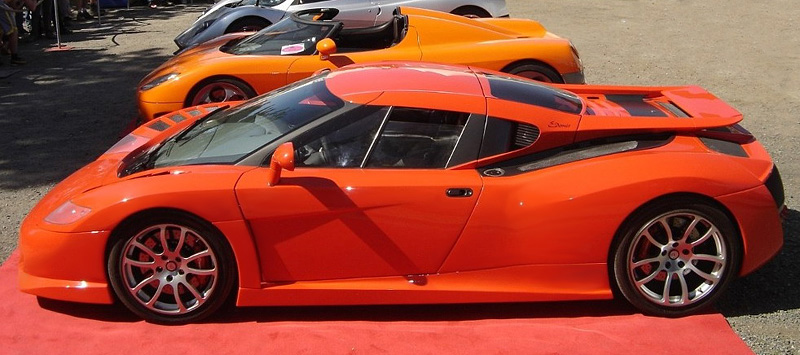
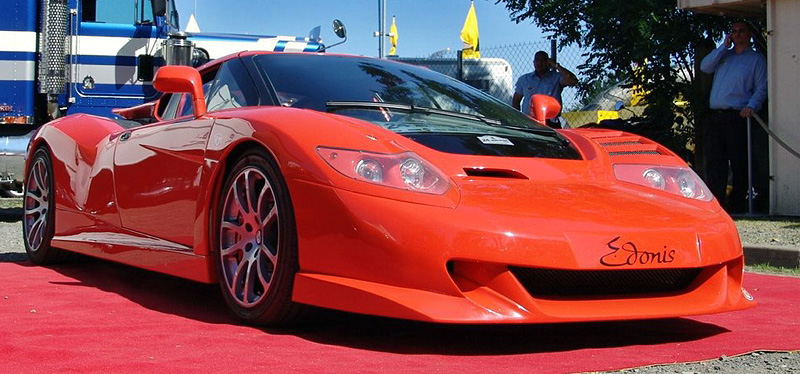
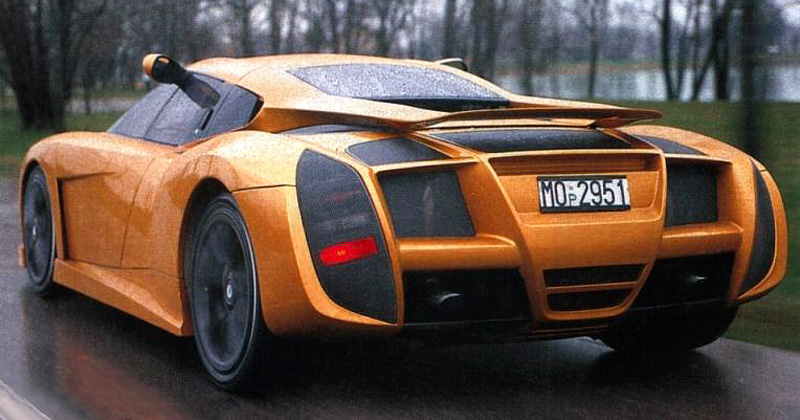
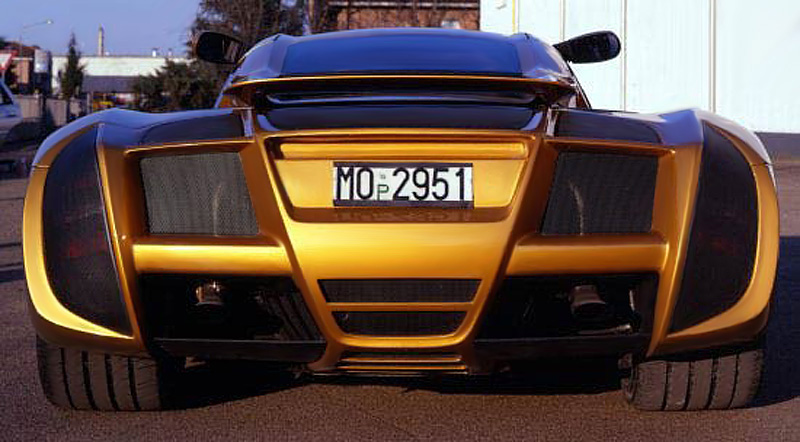
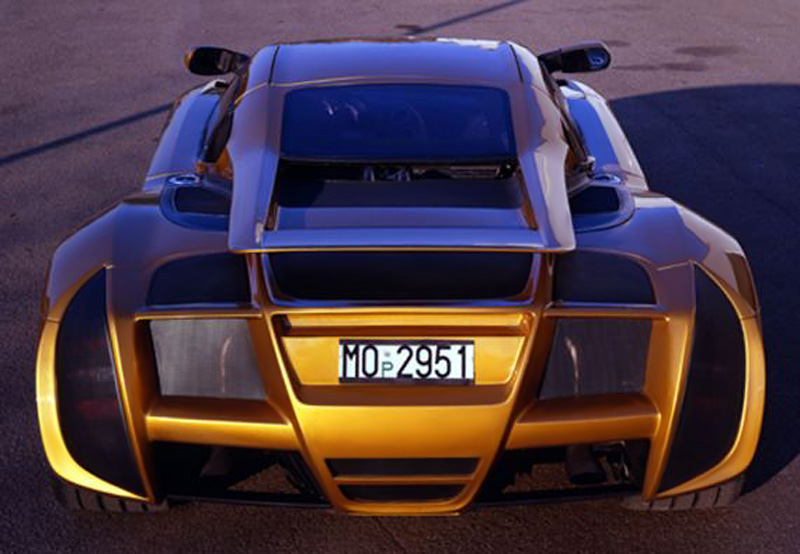
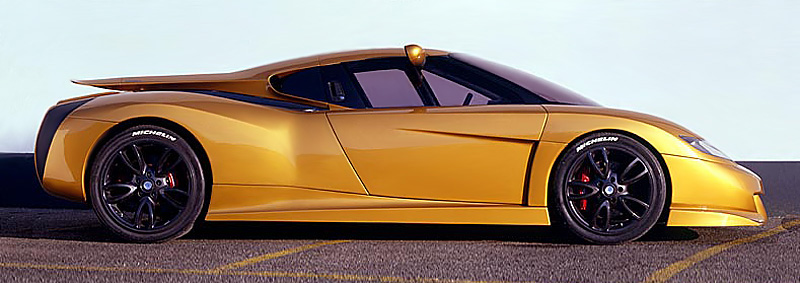
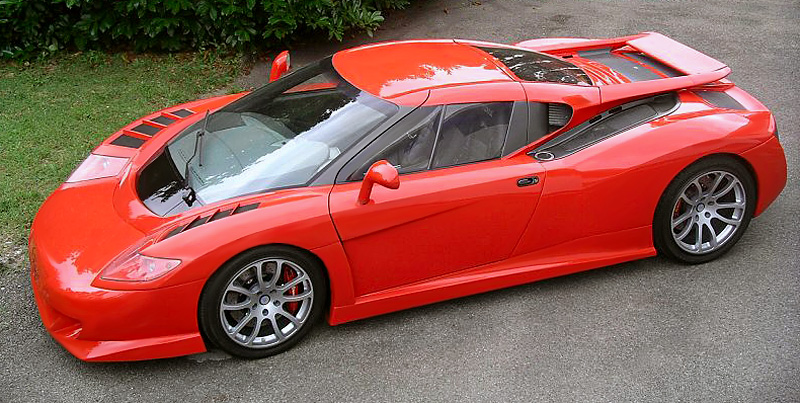

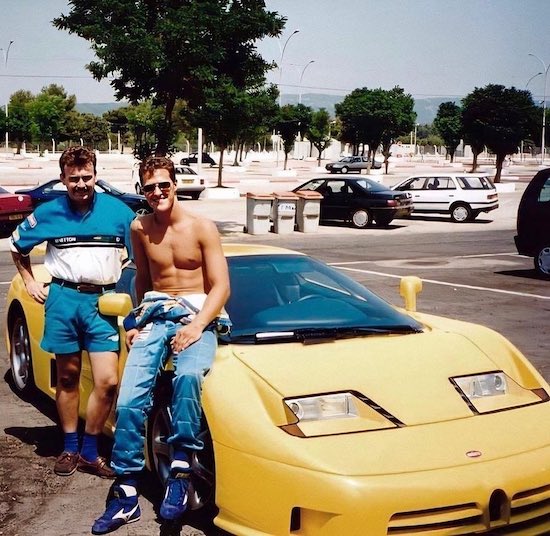

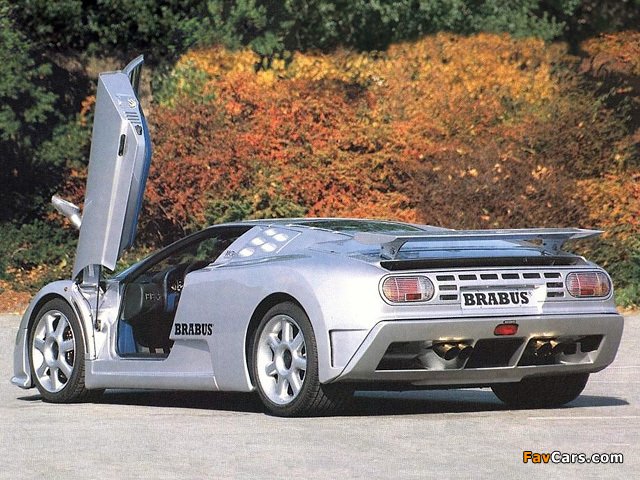
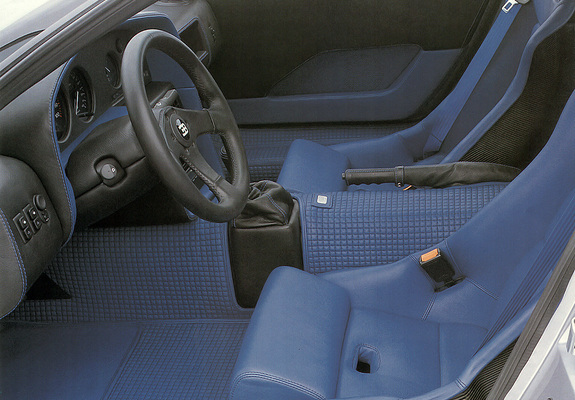
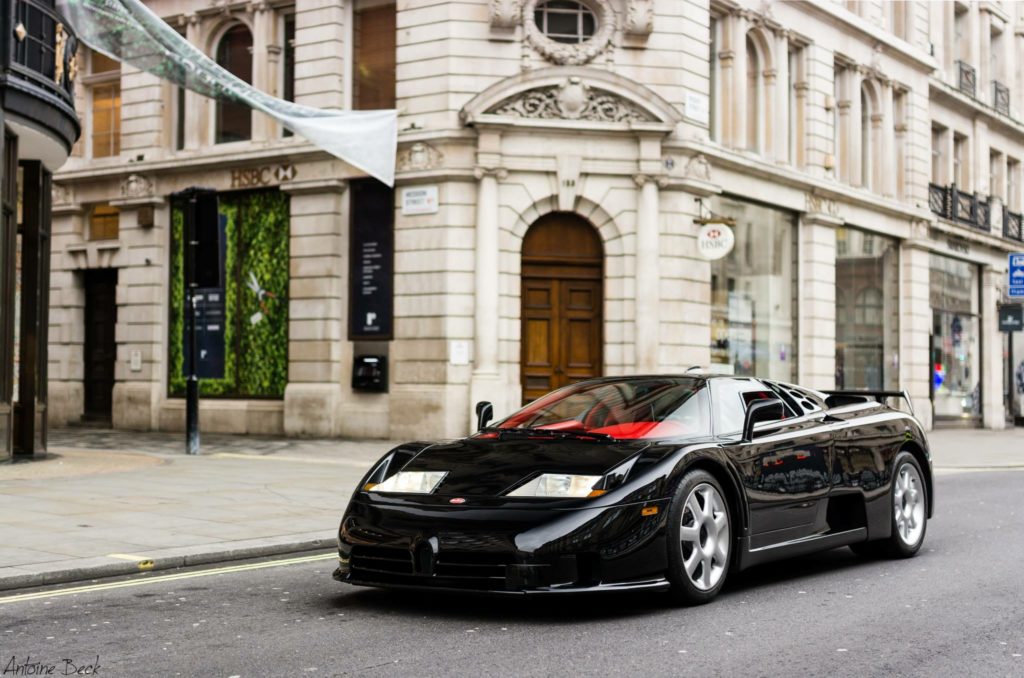

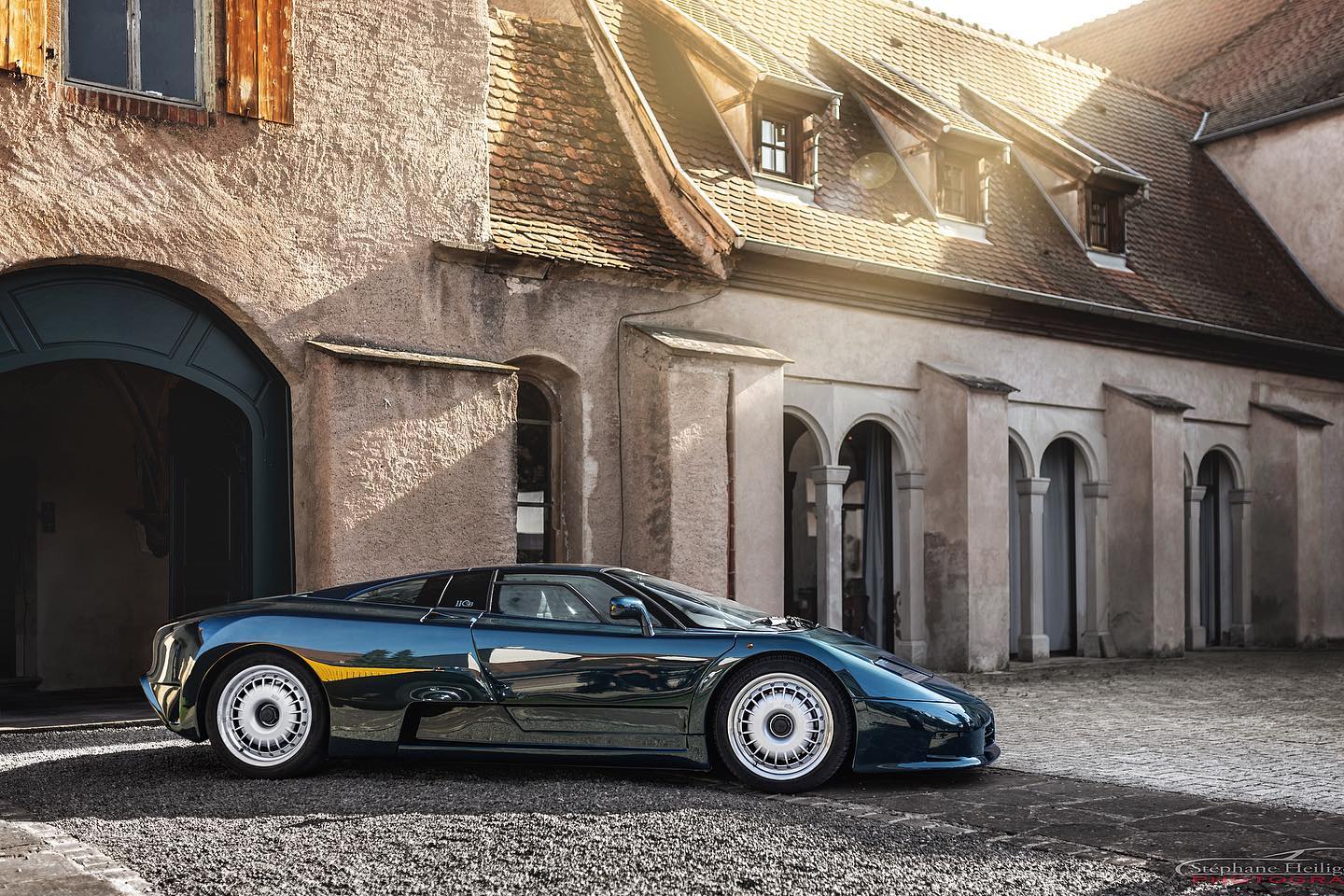



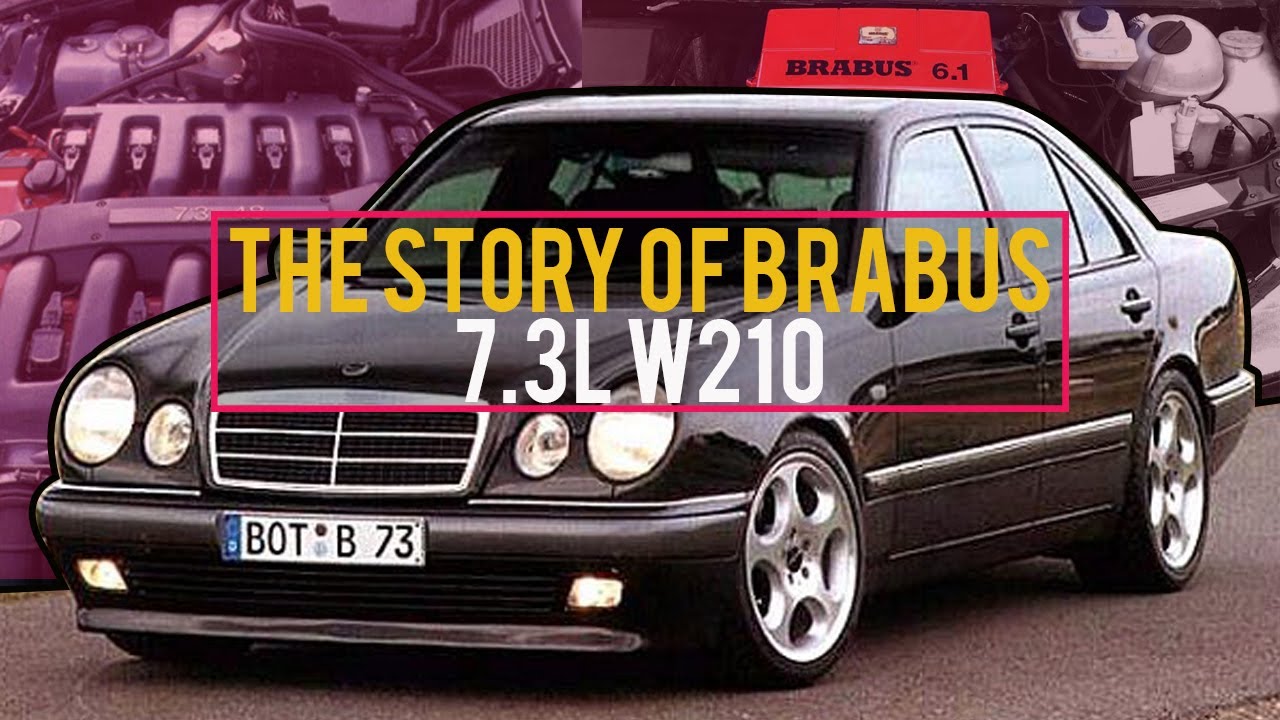


Sjuk historia. Bra inlägg! Jag tror att min farbror var bekant med han som hade alla superbilar, minns bilder på gt1:an. Och på tal om speciella bilar så har jag suttit i prototypen till Diablo SE30. Den hade mycket mer kolfiber än produktionsbilen. Såg den på en Banträff på Gelleråsen, tror ägaren var från Gävle. Tråkigt att det skulle sluta så där, undra hur bilarna hade varit idag om dom hade fått fortsätta?
Kul =)
Visst det var ju en gammal bil.. Och nästa generation som kom var ju LJUSÅR modernare.. Så det var ju dags att låta bilen gå i pension.. men liiite till kunde de ha fortsatt kanske.
[…] Dagens Bil : Bugatti EB110 – Bilen som vägrade dö […]